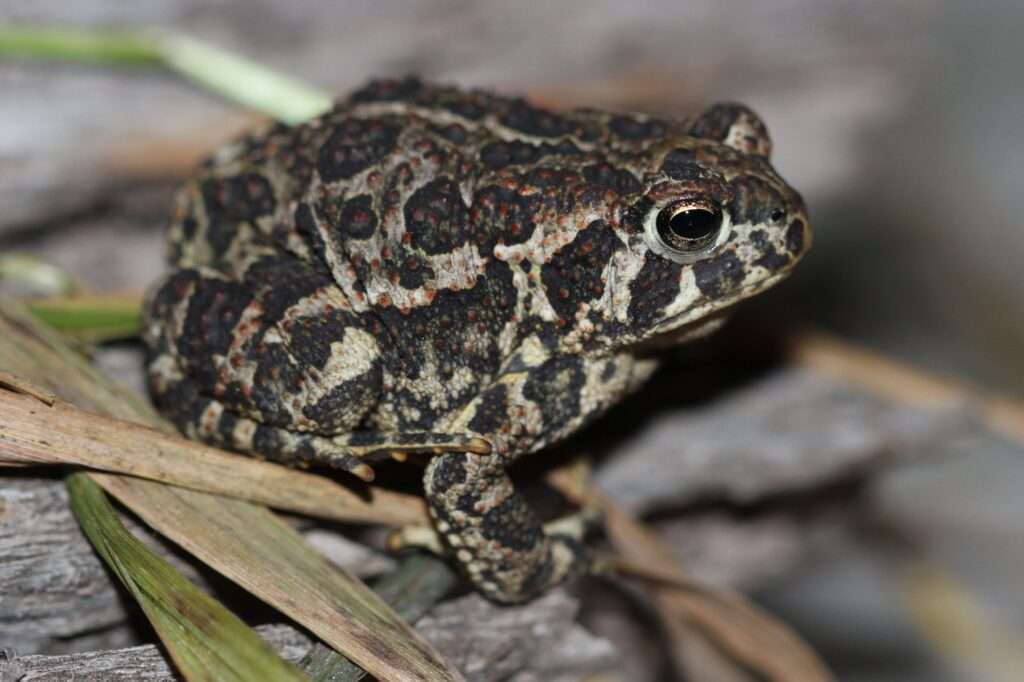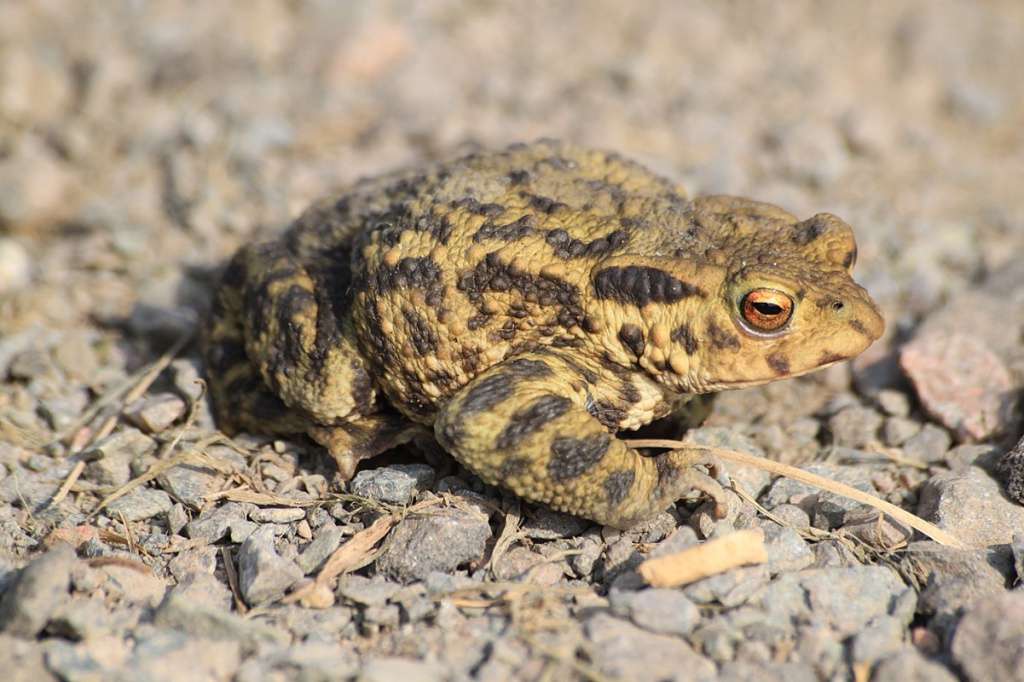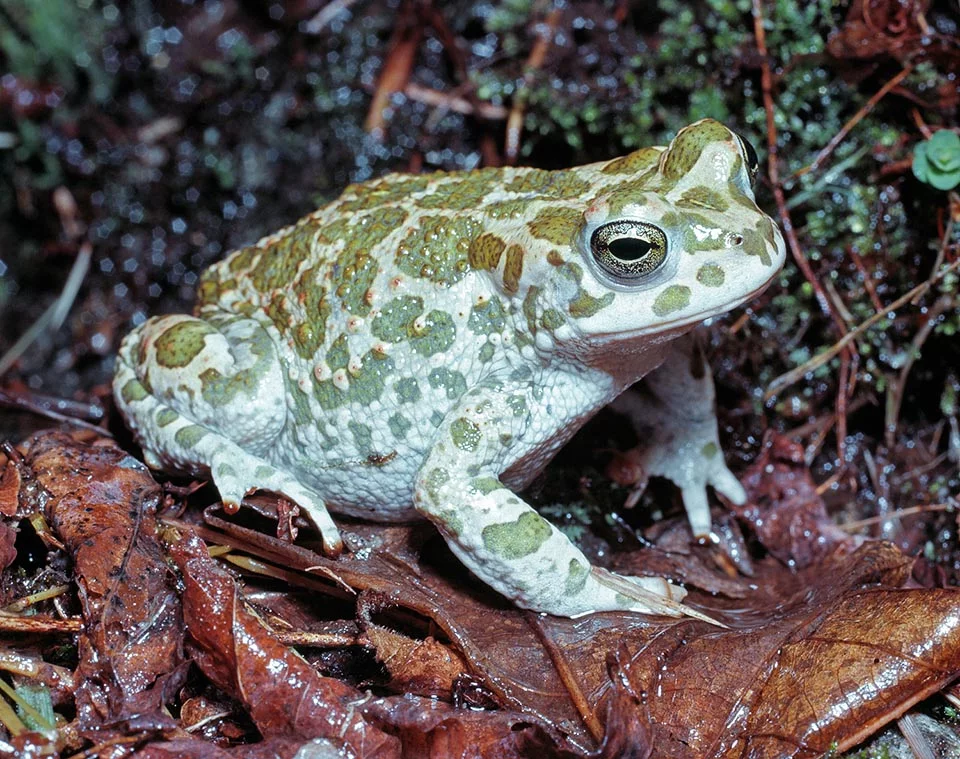
Anxyrus hemiophrys, sometimes is a species of toad that can be found in the prairies of western Canada south and sections of the upper midwest of the United States. The toad-like Anaxyrus hemiophrys has horizontal pupils, a lack of a tail and teeth, thick, warty skin, and these traits.
Appearance
The male Canadian Toad is a little smaller than the female, and both sexes can reach a body length of 9 cm. Individuals have darker blotches and are tan, light brown, grey, brownish green, or reddish brown. Although it might be faded on certain people, the vertebral stripe normally runs down the back in shades of white or cream. Grey spots with a white to brown belly are present. Canadian toads have strong cranial crests, big kidney-shaped parotoid glands behind each eye, and granular skin with enormous wart-like bumps (raised ridges between the eyes). The hind feet have two noticeable tubercles that are utilized for burrowing, and the legs are short. Tadpole-like larvae lack front legs and have long tails with a big fin (newly hatched tadpoles are legless). The larvae are dark in colour with transparent tail fins and a bicolored tail. The larvae can reach a maximum length of 3 cm before metamorphosing. A high-pitched trill is used as the breeding call.

Habitat
The Canadian Toad is primarily distributed in Canada, as its name suggests. Eastern Alberta, a tiny piece of the southern Northwest Territories, the majority of Saskatchewan with the exception of the northeastern part of the state, and southwestern Manitoba are among the places where it can be found. This species is only found in North Dakota, eastern South Dakota, and western Minnesota in the United States.
Canadian toads can reproduce in a range of shallow aquatic environments, including ditches, marshes, lake margins, ponds, and slow-moving sections of streams and rivers. Instead of in forests, breeding places are found in open habitats like prairies and aspen parkland. Canadian toads spread out into terrestrial habitats throughout the summer, including prairie and grassland, aspen parkland, forest, and willow or grassy bogs, but they often stay close to water. People hibernate underground in holes they dig below the frost line.
Diet
The tadpoles of Anaxyrus hemiophrys feed by suspending themselves in the water, where they consume plant matter and other nutrients. Young Anaxyrus hemiophrys’ primary food source is a little ground insect called a Coleoptera (beetles). The Coleoptera (beetles) and Hymenoptera (wasps) are the most significant insect groups in the adult Canadian toad’s diet.
Reproduction
For Canadian Toad, breeding normally begins in late April or early May during early emergence and lasts until August or September. Amplexus is the term for the way the male grabs the female. The male fertilize the eggs with his sperm as the female in shallow water is laying them. In shallow areas of bodies of water, eggs are placed. Debris from vascular plants, fresh grass shoots, and/or scant cattail can all be found in the water.
Table





